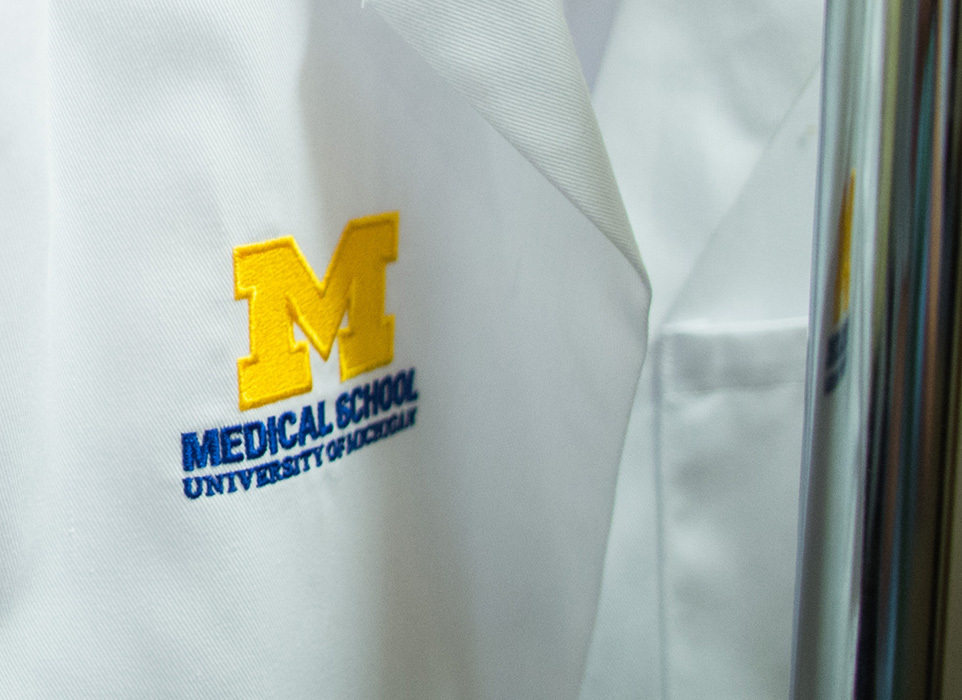
Assistant Professor of Pathology and Assistant Professor of Urology
[email protected]
Available to mentor
Sethu Pitchiaya

Assistant Professor
-
Center MemberRogel Cancer Center
-
Wang X, Qiao Y, Asangani IA, Ateeq B, Poliakov A, Cieślik M, Pitchiaya S, Chakravarthi BVSK, Cao X, Jing X, Wang CX, Apel IJ, Wang R, Ching-Yi Tien J, Juckette KM, Yan W, Jiang H, Wang S, Varambally S, Chinnaiyan AM. Cancer Cell, 2024 Aug 12; 42 (8): 1471Journal ArticleErratum: Development of Peptidomimetic Inhibitors of the ERG Gene Fusion Product in Prostate Cancer (Development of Peptidomimetic Inhibitors of the ERG Gene Fusion Product in Prostate Cancer (2017) 31(4) (532–548.e7), (S1535610817300600), (10.1016/j.ccell.2017.02.017))
DOI:10.1016/j.ccell.2024.07.009 -
Gao G, Sumrall ES, Pitchiaya S, Bitzer M, Alberti S, Walter NG. Nat Rev Nephrol, 2023 Dec; 19 (12): 756 - 770.Journal ArticleBiomolecular condensates in kidney physiology and disease.
DOI:10.1038/s41581-023-00767-0 PMID: 37752323 -
Hosono Y, Niknafs YS, Prensner JR, Iyer MK, Dhanasekaran SM, Mehra R, Pitchiaya S, Tien J, Escara-Wilke J, Poliakov A, Chu S-C, Saleh S, Sankar K, Su F, Guo S, Qiao Y, Freier SM, Bui H-H, Cao X, Malik R, Johnson TM, Beer DG, Feng FY, Zhou W, Chinnaiyan AM. Cell, 2023 Sep 14; 186 (19): 4254 - 4255.Journal ArticleOncogenic Role of THOR, a Conserved Cancer/Testis Long Non-coding RNA.
DOI:10.1016/j.cell.2023.08.025 PMID: 37714137 -
Duran E, Schmidt A, Welty R, Jalihal AP, Pitchiaya S, Walter NG. Wiley Interdiscip Rev RNA, 2023 14 (5): e1787Journal ArticleUtilizing functional cell-free extracts to dissect ribonucleoprotein complex biology at single-molecule resolution.
DOI:10.1002/wrna.1787 PMID: 37042458 -
Li H, Younger N, Shin HJ, Malik B, Zhao SG, Pitchiaya S, Calvert M, Zhang M, Chang L, Chesner L, Hua J, Li K, Kothari V, Egusa E, Chou J, Das R, Burlingame A, Chinnaiyan AM, Li H, Feng FY. Cancer Research, 2023 Jun 2; 83 (11_Supplement): a027 - a027.Journal ArticleAbstract A027: Identification and characterization of PLUTO-201, a novel lncRNA associated with prostate cancer metastasis
DOI:10.1158/1538-7445.prca2023-a027 -
Berends JE, Dommeti VL, Dudley JN, Carras S, Nam CS, Robinson T, Keller E, Dupree JM, Pitchiaya S. Journal of Urology, 2023 Apr; 209 (Supplement 4): e3Journal ArticleMP01-05 REVEALING NEW PARADIGMS IN MALE INFERTILITY THROUGH THE LENS OF STRESS-INDUCED GRANULES
DOI:10.1097/ju.0000000000003212.05 -
Pitchiaya S, Berends J, Dommeti V, Dudley J, Veronezi G, Ramachandran S, Ramachandran S. Journal of Biological Chemistry, 2023 299 (3): s168Journal ArticleAbstract 1340: Nuclear biomolecular condensates regulate transcriptional responses during stress
DOI:10.1016/j.jbc.2023.103364 -
Patel P, Nallandhighal S, Scoville D, Tran L, Cotta B, Udager A, Rao A, Palapattu G, Dadhania V, Pitchiaya S, Salami S. Journal of Urology, 2022 May; 207 (Supplement 5): e100Journal ArticlePD07-06 SPATIAL TRANSCRIPTOMIC PROFILING OF PROSTATE CANCER REVEALS ZONE SPECIFIC ANDROGEN RECEPTOR SIGNALING AND IMMUNE INFILTRATION
DOI:10.1097/ju.0000000000002526.06